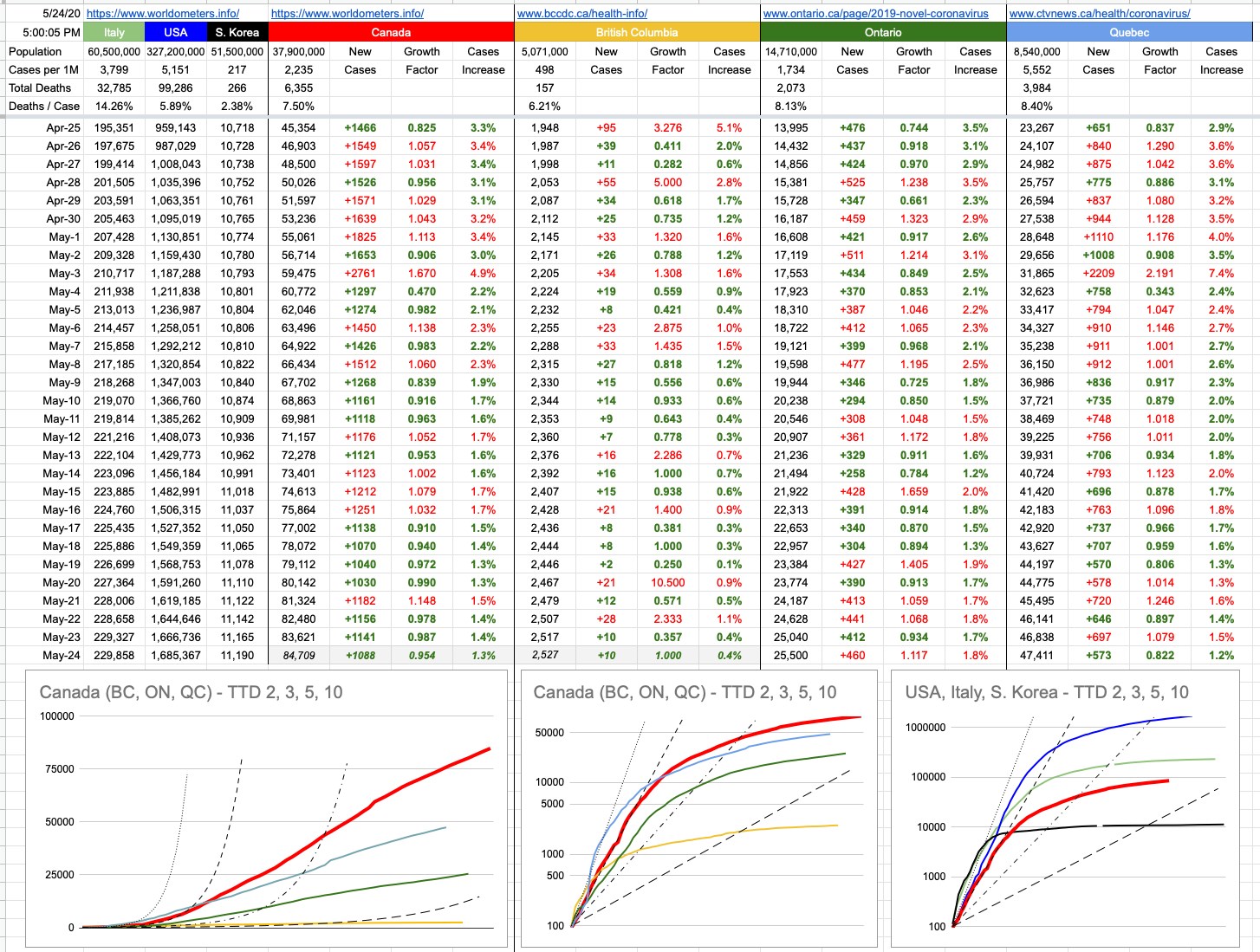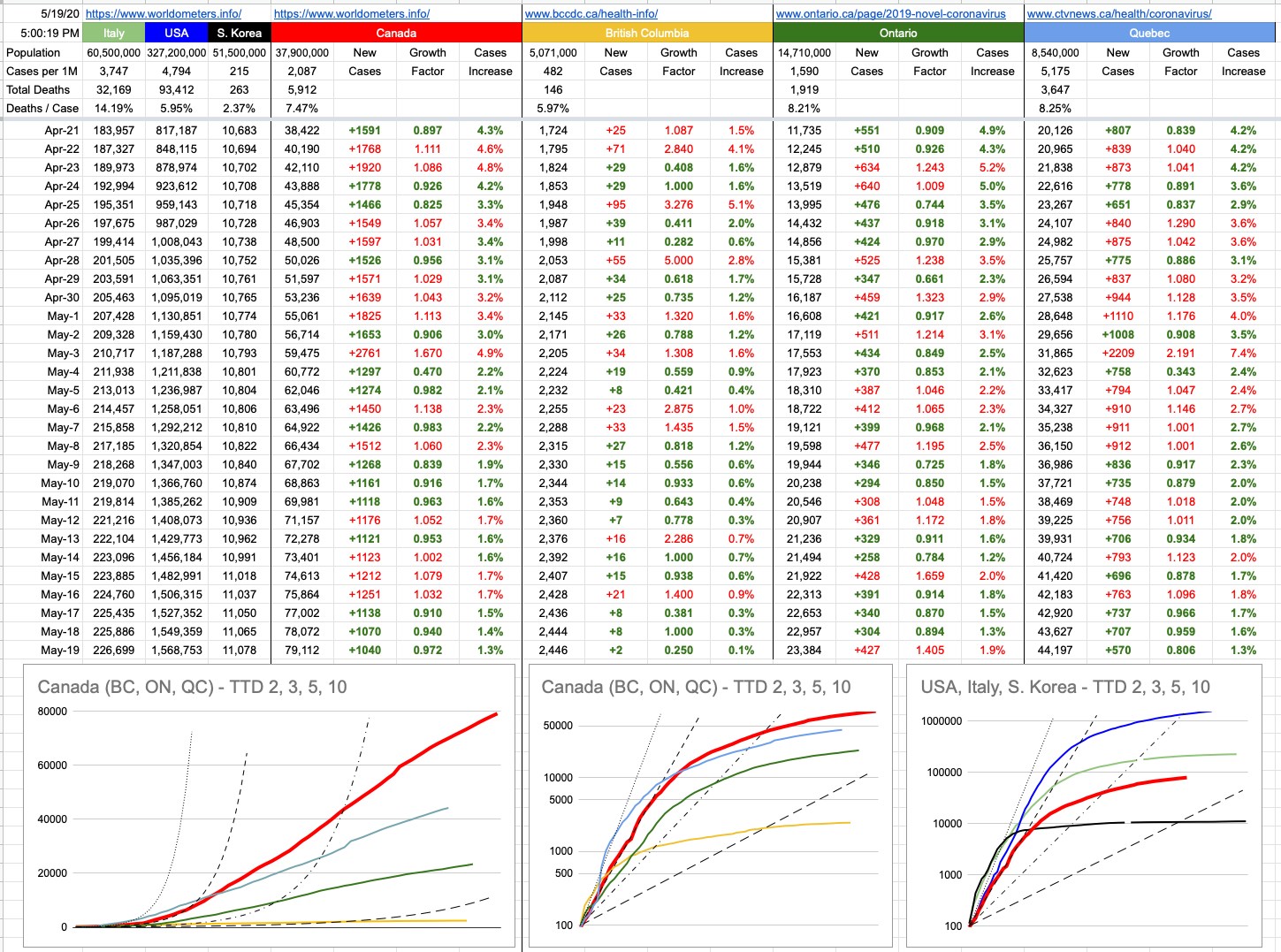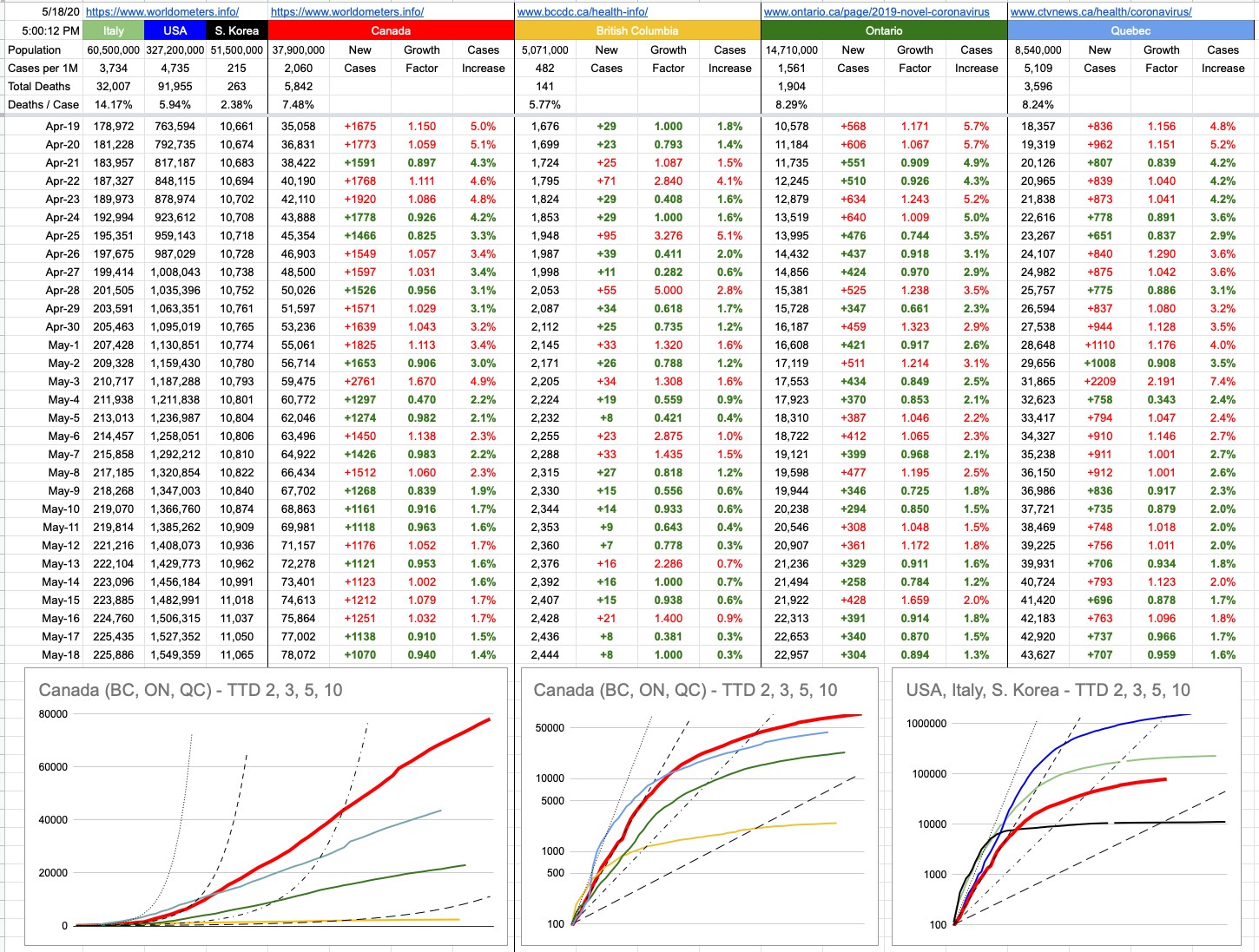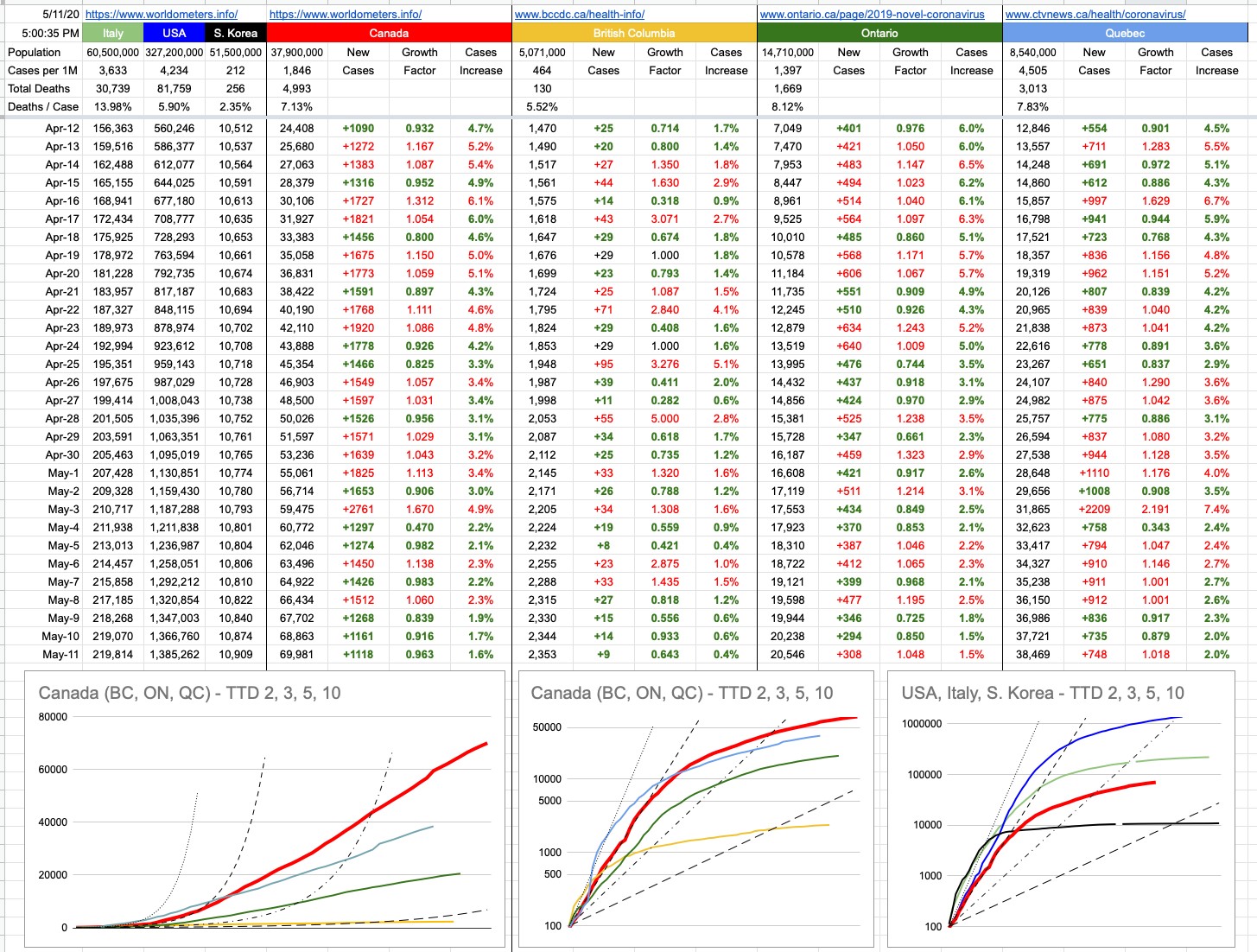Day 69 – May 24, 2020
No updated numbers for B.C. today, so, as usual… I’ll make an intelligent guess and fix it tomorrow.
So let’s talk about yesterday’s numbers, and let’s begin with the old “5 blind guys and an elephant” parable. The premise of it is straightforward… these 5 guys have never encountered an elephant, and each reach different conclusions about the different parts of the elephant that they touch. The guy who grabs a leg describes it like a tree trunk. The guy who grabs the tail describes it as a rope. The guy who grabs an ear describes it as flat and floppy. The other two guys… one grabs a tusk, the other grabs the trunk. Their interpretation and discussion with each other is outside the scope of this post; we’ll leave Freudian experts to discuss their conclusions.
The moral of the story actually changes, depending on what lesson you’re trying to teach. Maybe that vastly differing opinions are all justified when talking about the same subject, like someone else’s opinion is just as valid. Maybe that sometimes, we’re fighting about the same thing. Maybe that we need to question our method of questioning. In some versions, the guys aren’t blind; just in the dark. But once they’ve “seen the light”, they all agree.
Let’s go with something like that… the guys aren’t blind, just initially blindfolded… but were convinced by their first impressions, especially because they went around telling everyone, and in doing so, convincing themselves that their version was “the most correct”. Indeed, even after the blindfolds were lifted, and they could see the big picture, they still clung to their beliefs… perhaps since they were already so invested. And, to add a bit more to it… once they could see, they realized that they were actually in an elephant park… with lots of different elephants. And, all of the elephants had been given names… of places, like in that series “Money Heist” (side note: watch Money Heist, and watch it in Spanish, with subtitles… incredibly good.. it’s on Netflix).
So these elephants… there’s one off in the distance… her name is New Zealand. She’s tiny, but looks very healthy. There’s one called Canada, who is really big and, for the most part, looks ok — parts of him looks much healthier than other parts, but he’ll be fine. There’s an elephant called United States… poor thing is really beaten up and needs to rest, but some trainer has a rope around him and is literally trying to drag him onto his feet.
But the elephant these guys had all initially touched and reached wildly different conclusions about… his name is Sweden.
Let’s pause here and be perfectly pragmatic. Without any opinion yet, here are some numbers, and a bit of comparison… of two places in the world where lots of people insist things are going really well: Sweden, and British Columbia. Starting points can be arbitrary, but for what it’s worth, both places had the same number of known cases (7) on Feb 27th. Sweden accelerated upwards far quicker than BC, and here’s where things are at, as of yesterday:
Population: BC 5.1M, Sweden 10.2M (2x)
Testing rates: BC 21.6 people out of 1,000, Sweden 20.8 (~same)
Known cases: BC: 2,517, Sweden 33,459 (13.4x)
Deaths: BC 157, Sweden 3,998 (25.5x)
Active cases: BC 303, Sweden 24,490 (81x)
Resolved cases recovery: BC 92.9% recovered, Sweden 55.4% recovered
Resolved cases deaths: BC 7.1% died, Sweden 44.6% died
Last 3 days: BC +40 positive tests, Sweden +1,665 positive tests (41.6x)
Last 3 days: BC 7 deaths, Sweden 161 deaths (23x)
I was chastised for stating somewhere that Sweden is letting their old people die. OK, I will clarify… they’re not letting their old people die; they’re letting everyone die. And by that, I simply mean they’re letting the virus run its natural course through the population, taking down whoever is unfortunate enough to contract the serious symptoms that might show up. The demographic profile of who’s actually dying is similar in both places, it’s just that for every elderly BC resident that passes away, 25 pass away in Sweden. That is the cost they’re willing to bear to keep the economy going, and there are undoubtedly people who’ll look at all of that, the same elephant I’m looking at, and come to a completely different conclusion as to what’s success and what isn’t. At some point, this is purely about opinion. The numbers speak for themselves, and you’re free to interpret them however you wish.
Yes… the measuring sticks of success are different, for different people. I don’t like to dwell in the purely pragmatic world, because it leaves out many things I consider very important and are part of my core values. Purely pragmatically, if you’re worried about economics, letting old people die makes sense. Same for sick or disabled people. The moment that the carrying-cost of someone’s existence outweighs the benefit, economically, to society, we’re throwing money away. Care homes? Wheelchair ramps? Braille on signs? Feeding into old-age pension plans? Think of all the money we could save.
A little over 80 years ago, around 1,000km south-west of Stockholm, there emerged a madman with that sort of agenda. Off he went, trying to rid his society of who and what he deemed undesirable, in the name of his version of the greater good. I wonder if perhaps the deep personal attachment I have to that particular historical event skews my objectivity, but on the “lives vs. economy” scale, I am very heavily tilted towards the “lives” side. Notwithstanding that without lives, you don’t have an economy anyway.
The few family members who managed to survive The Holocaust came out of it with very little, except each other, and that’s what I keep thinking about when this discussion comes up. Lives and family first, economy second. Elephants never forget… and when it comes to this, neither do I.
View Original Post and All Comments on Facebook











